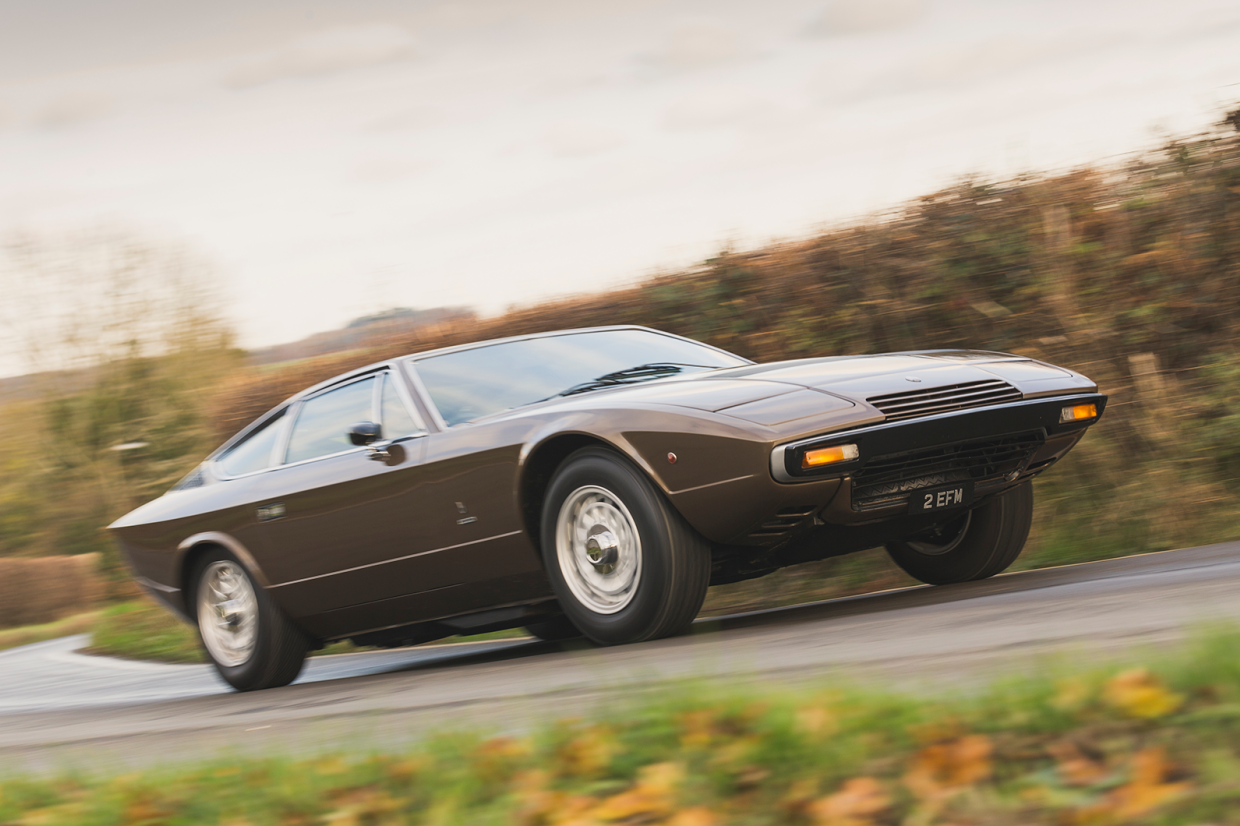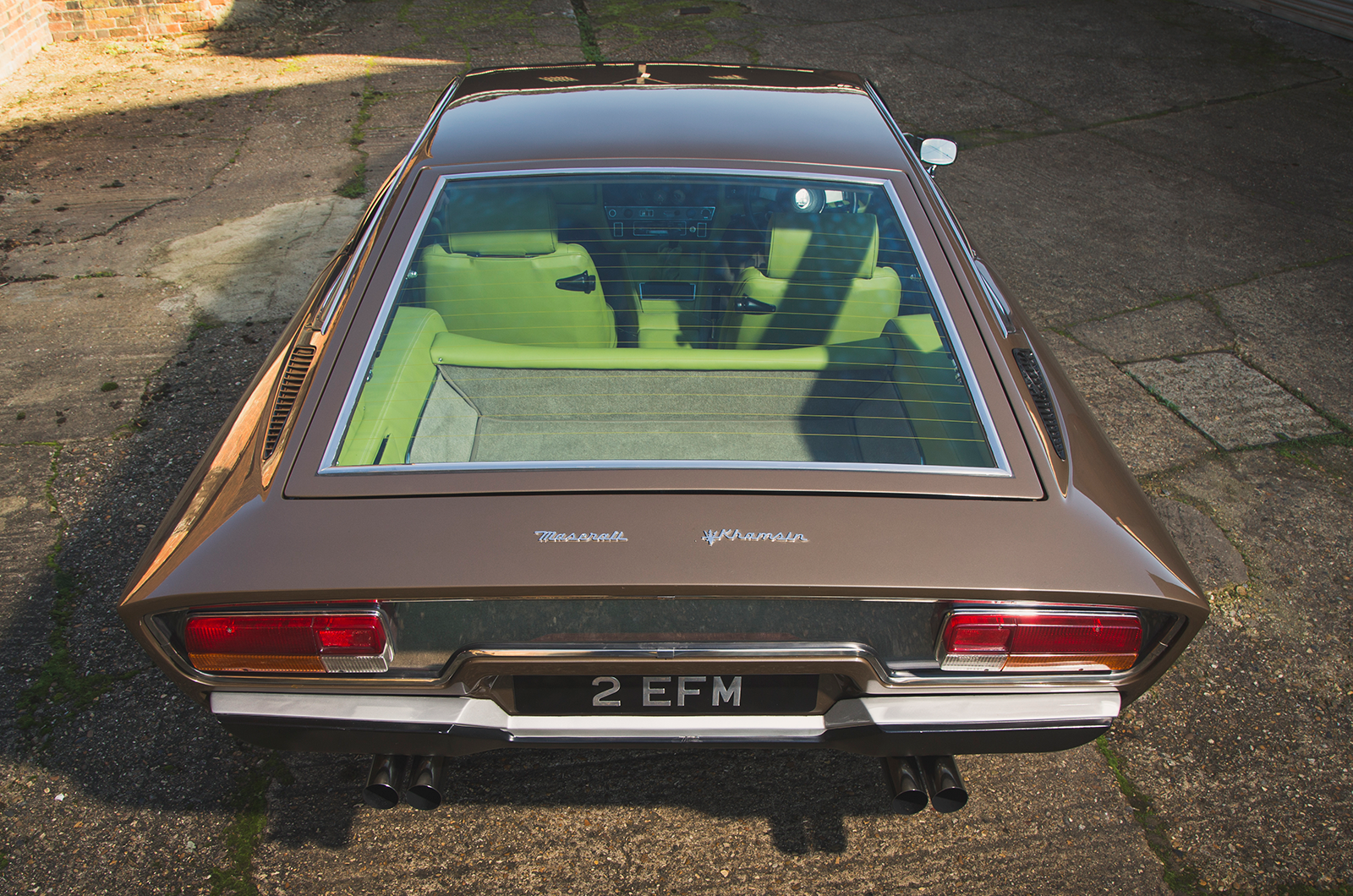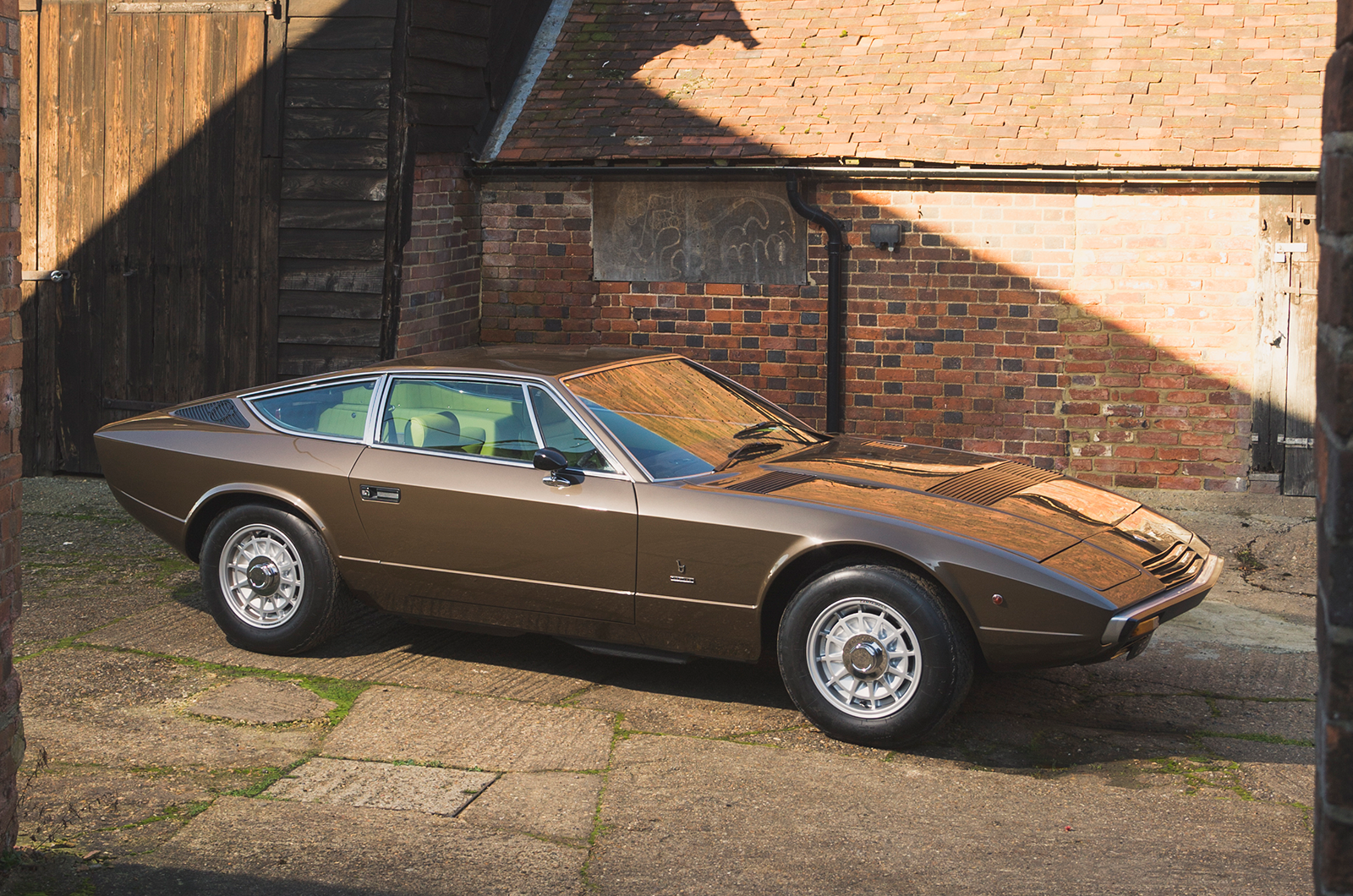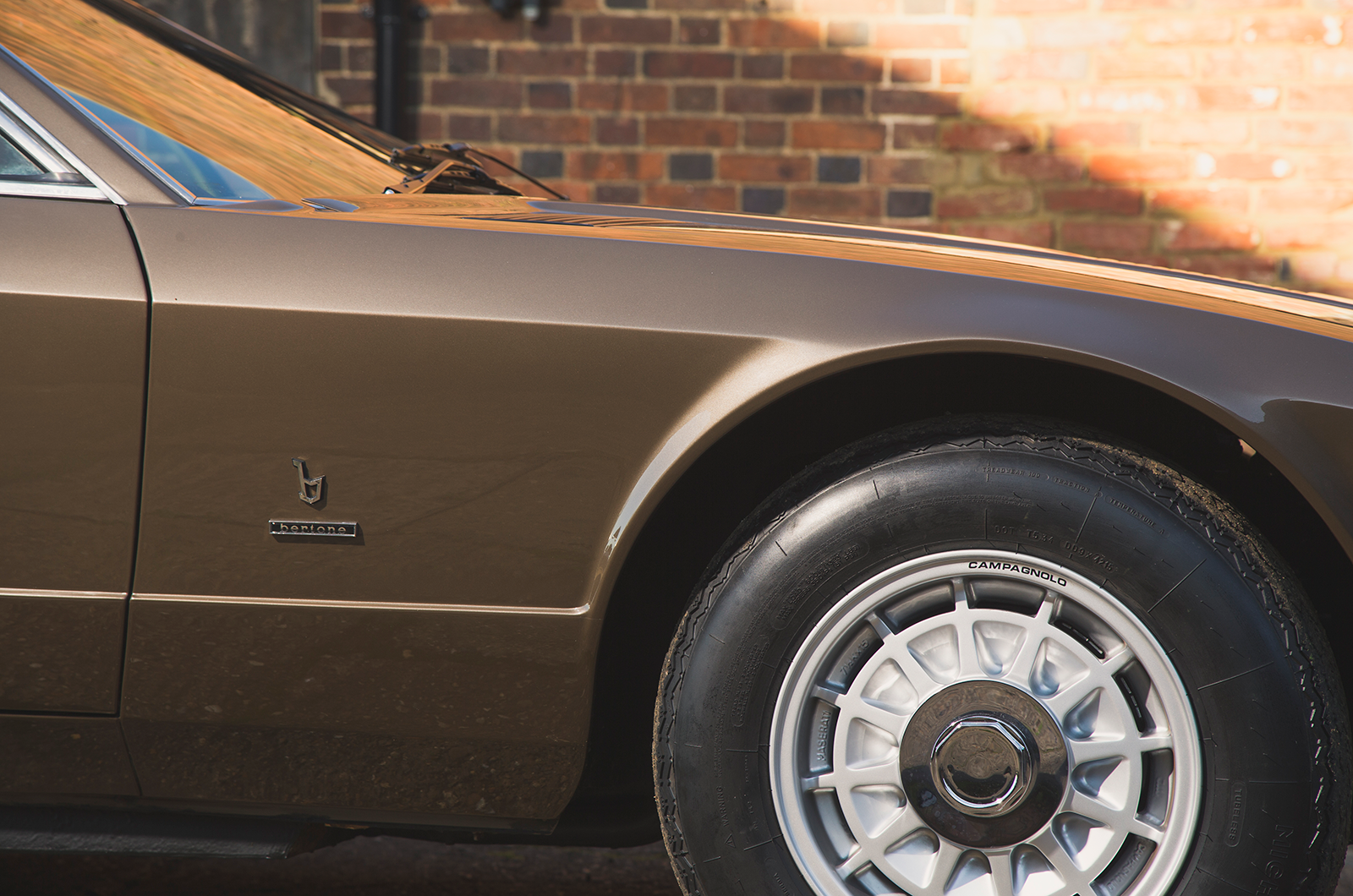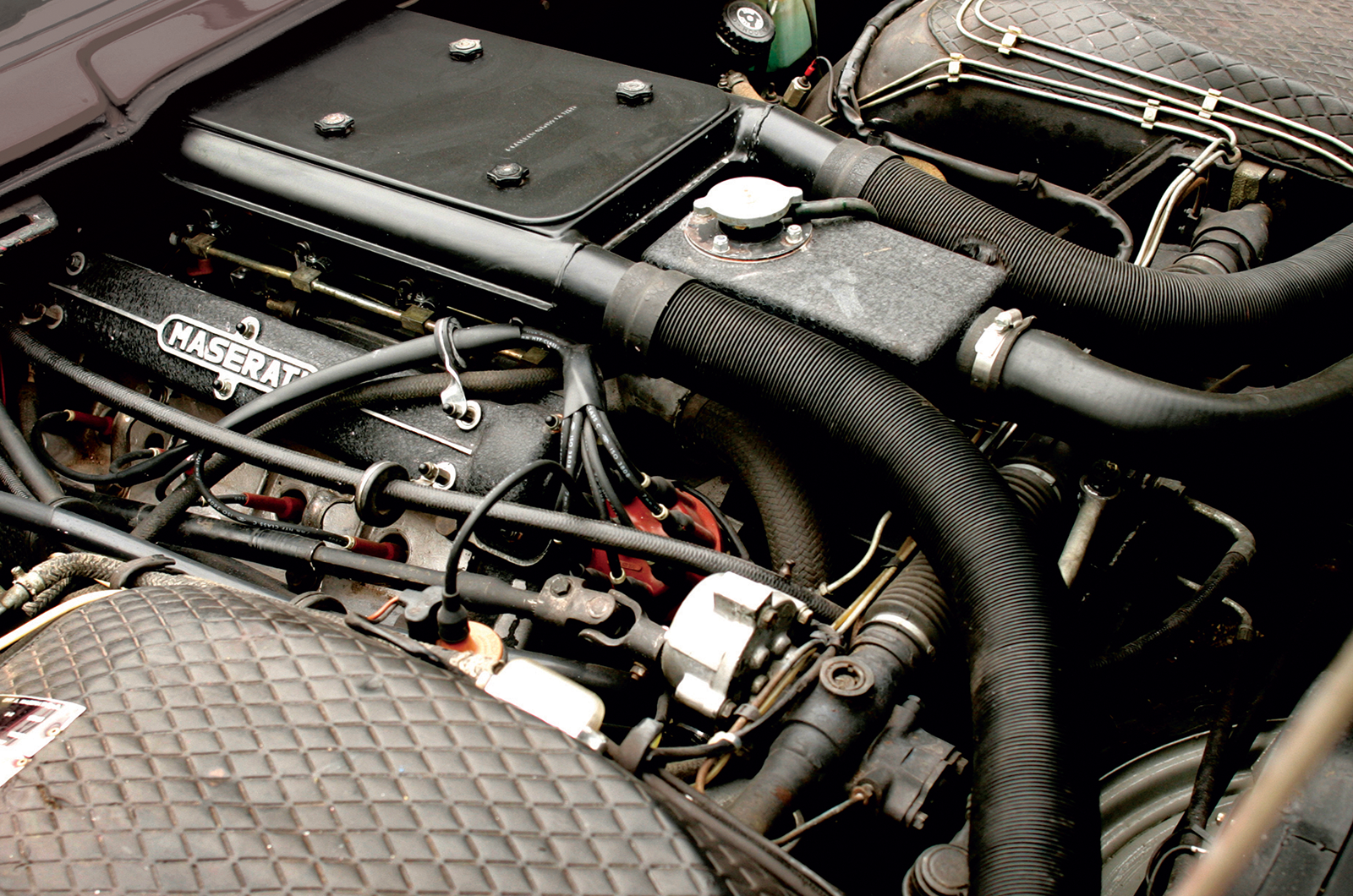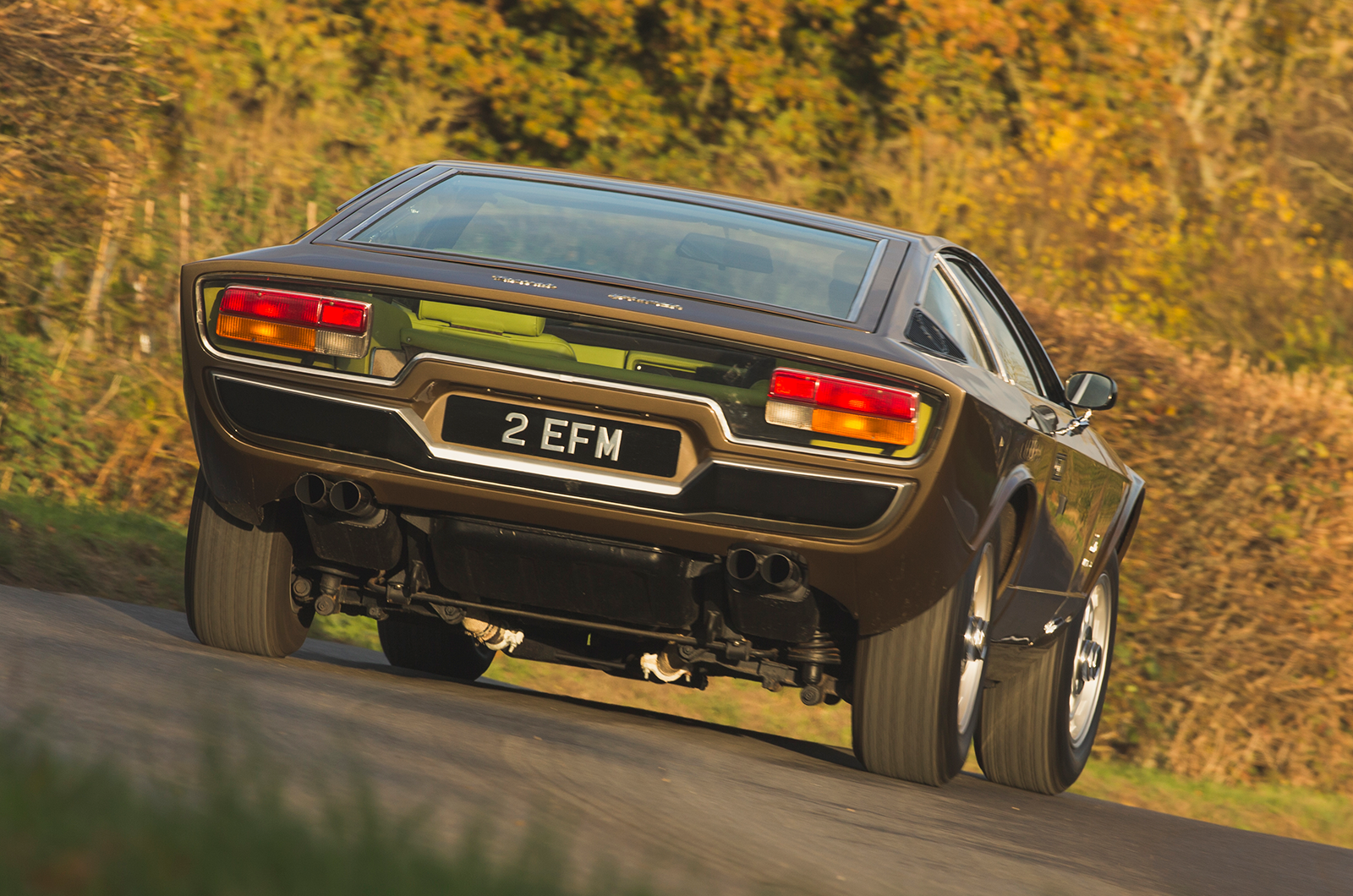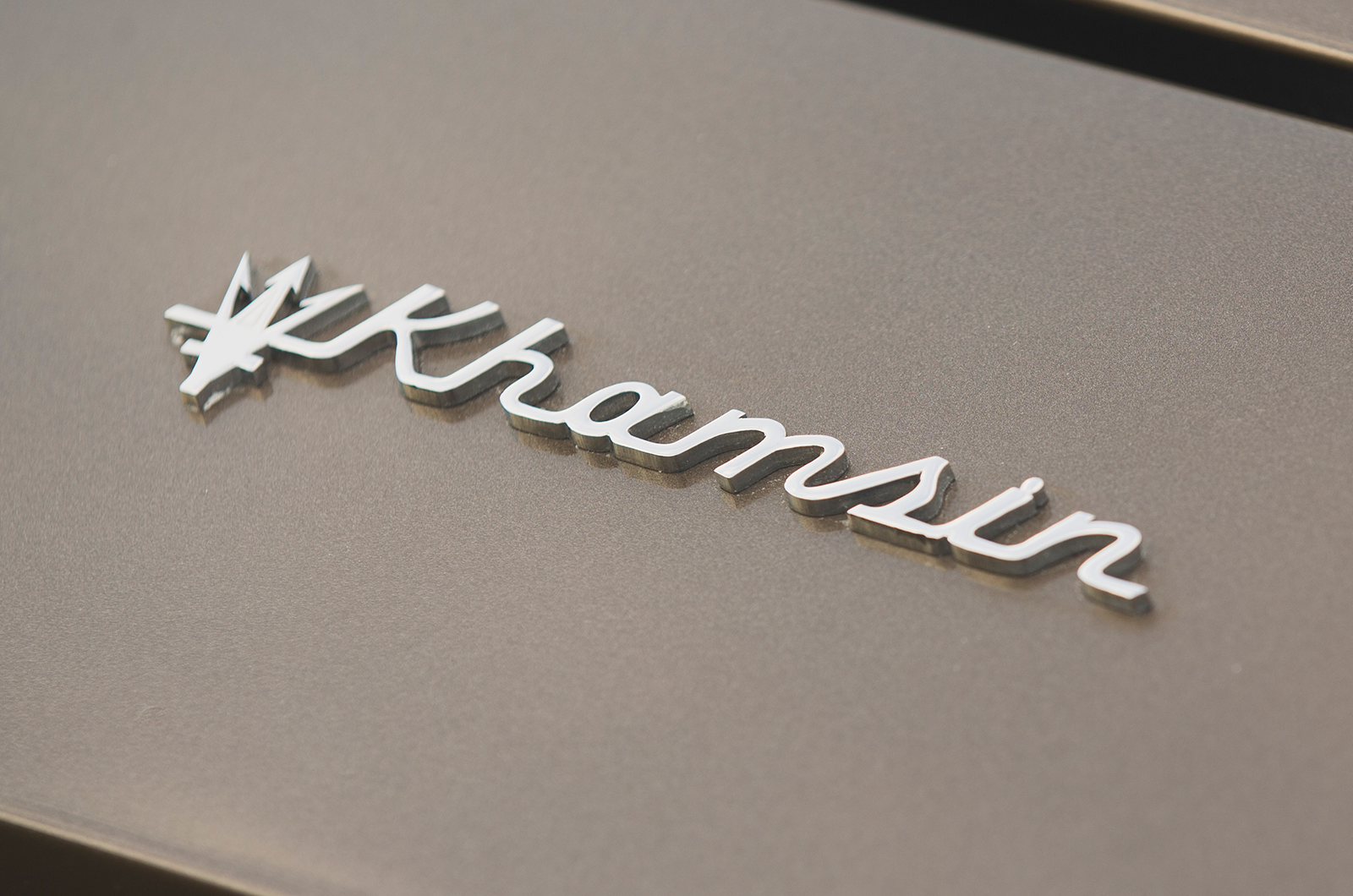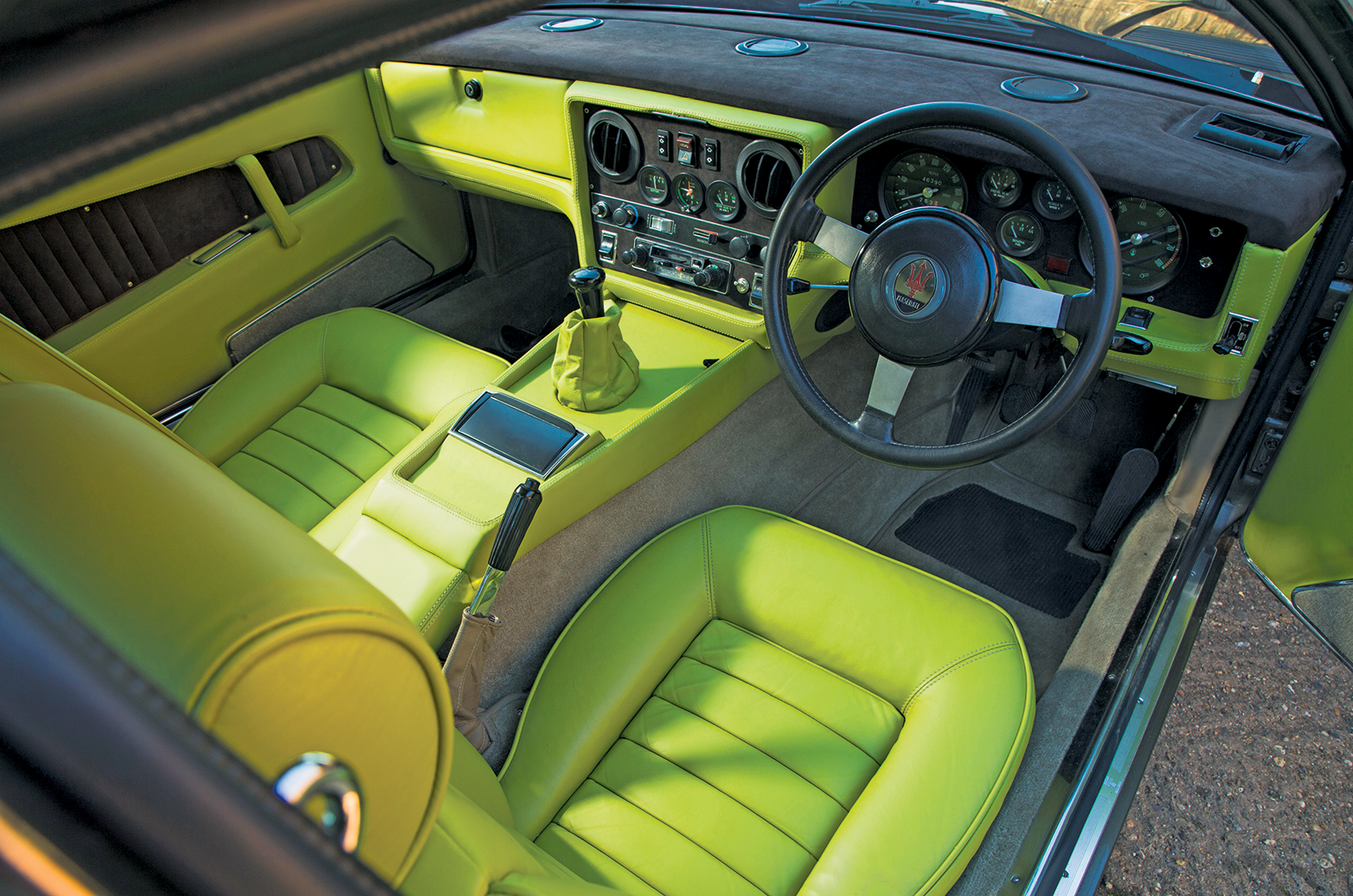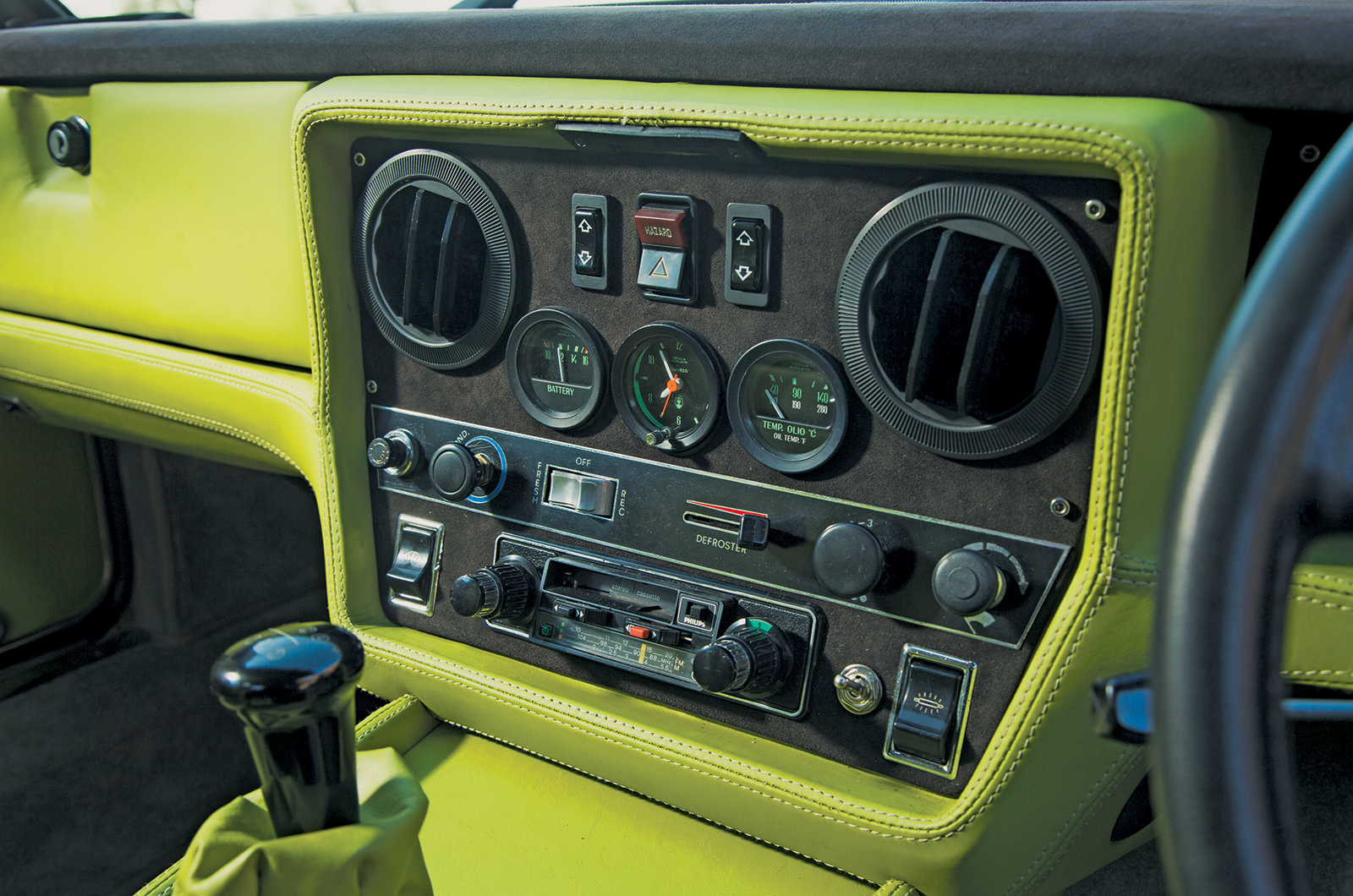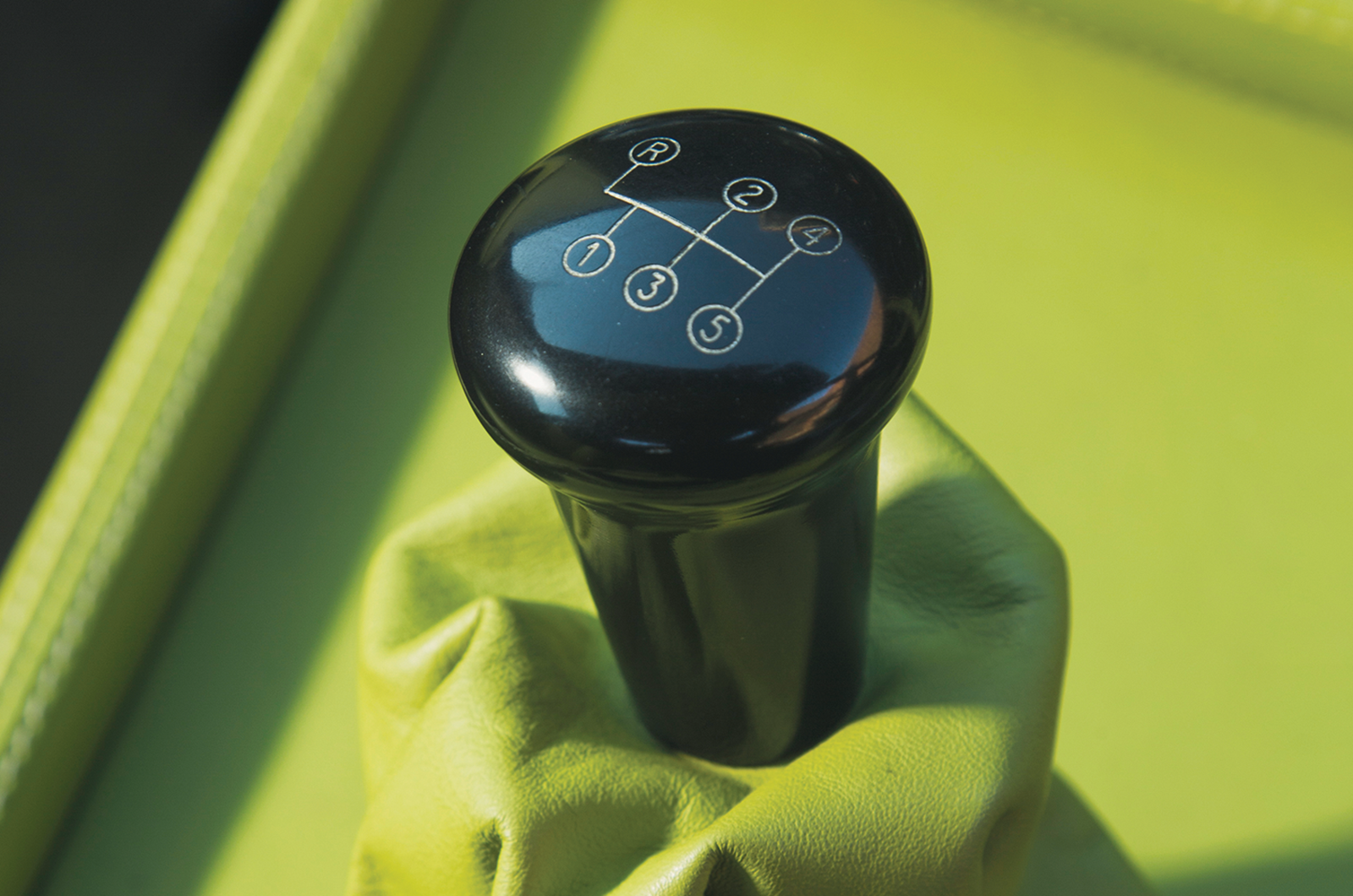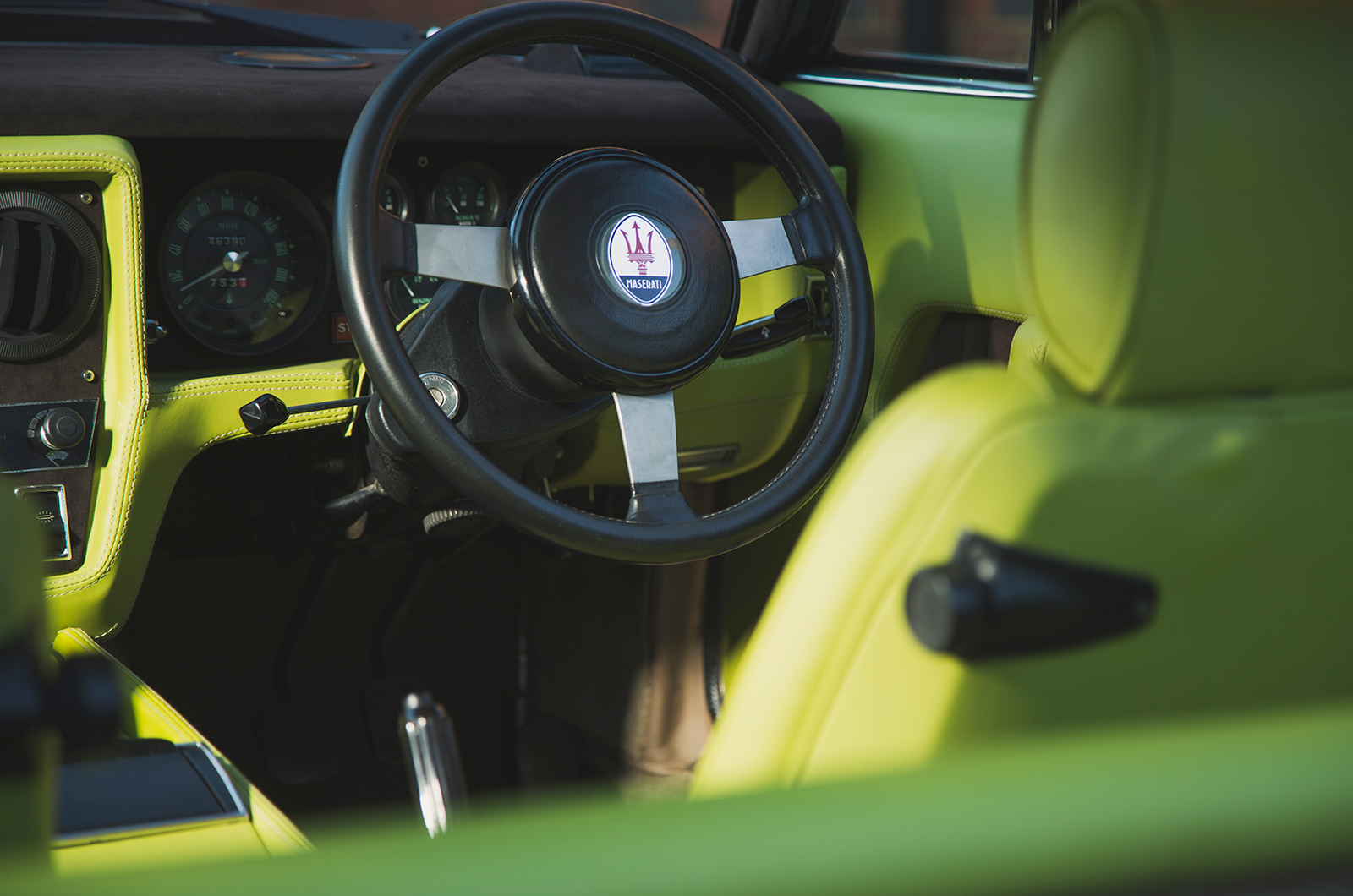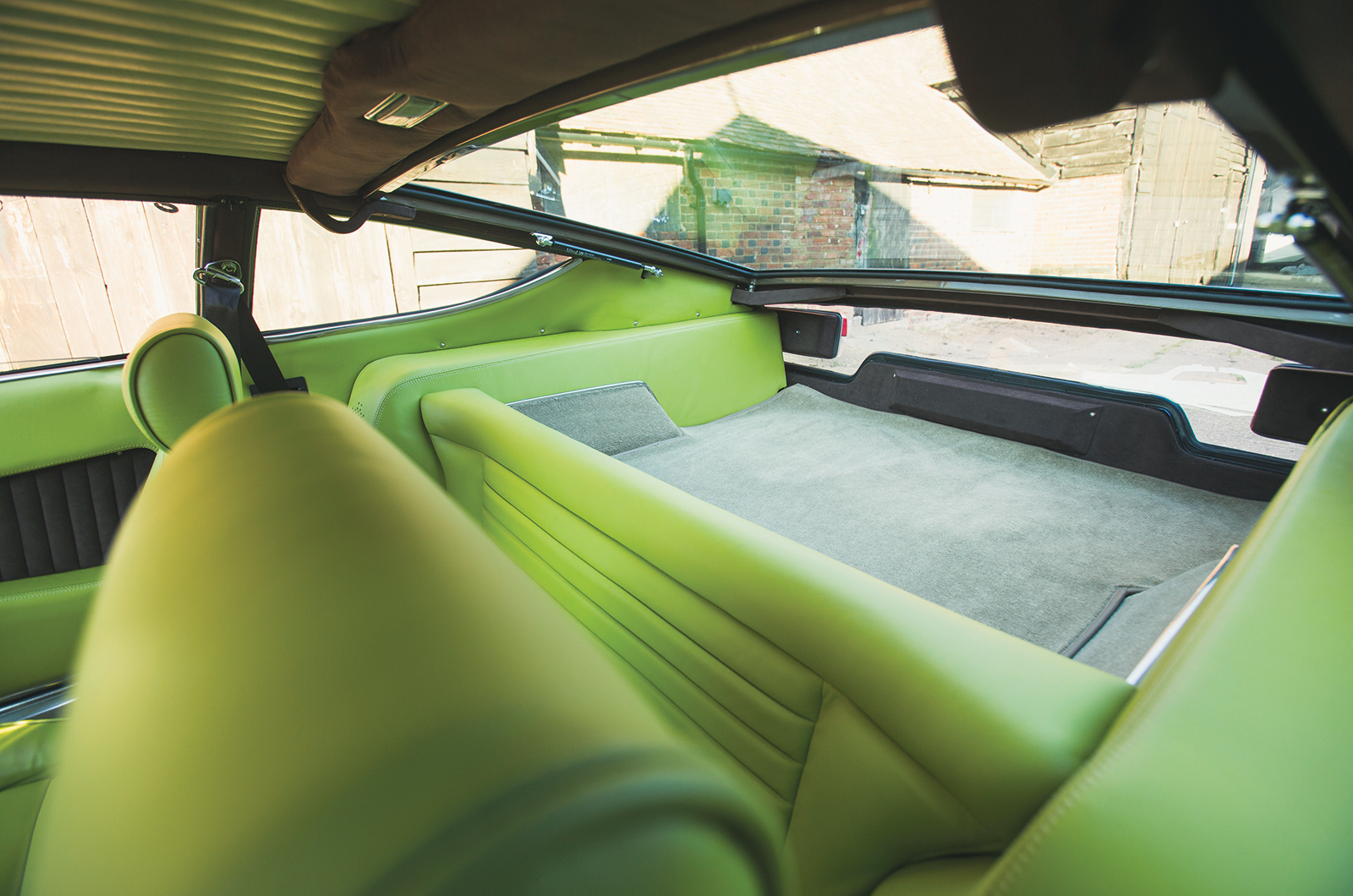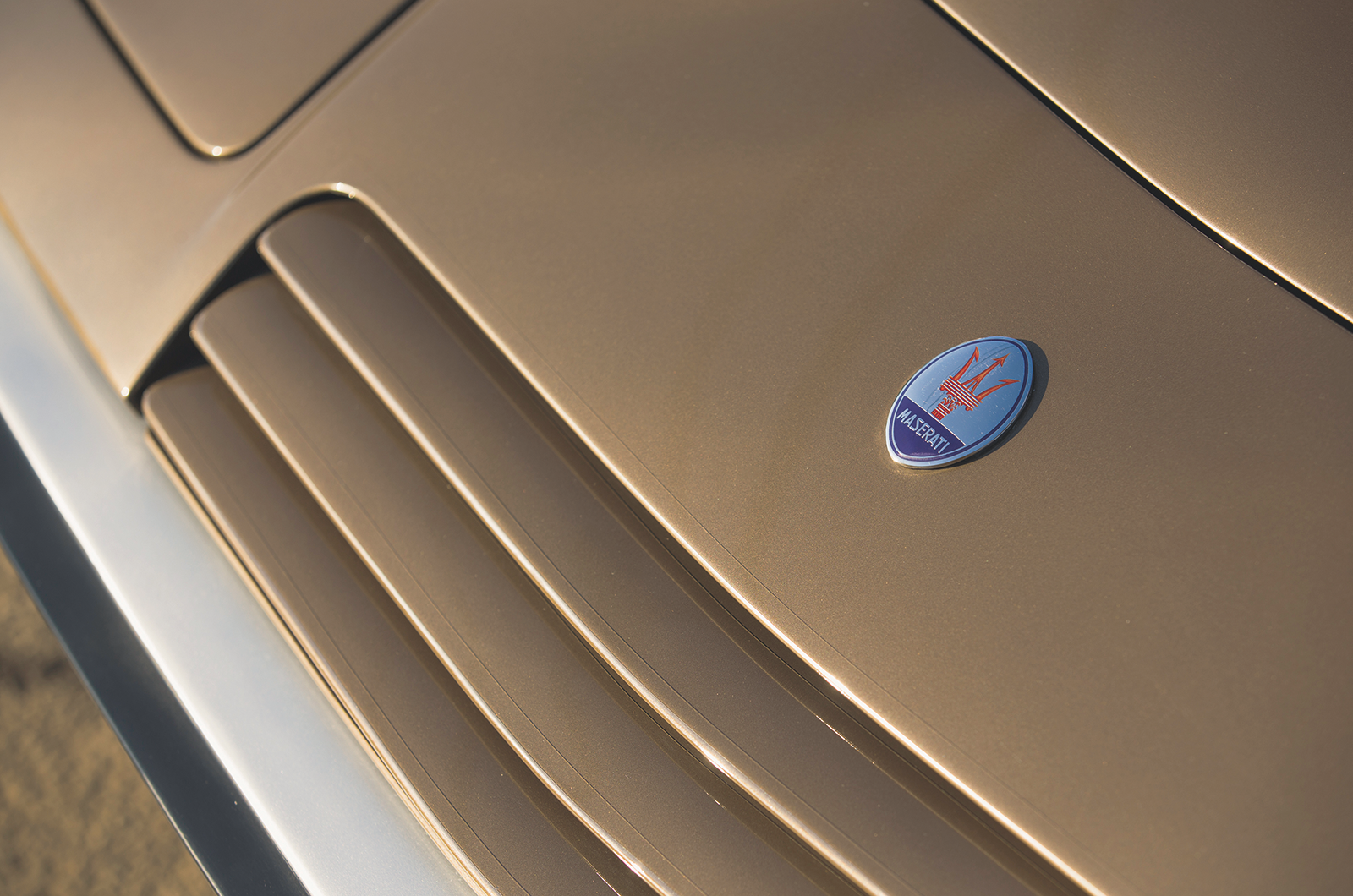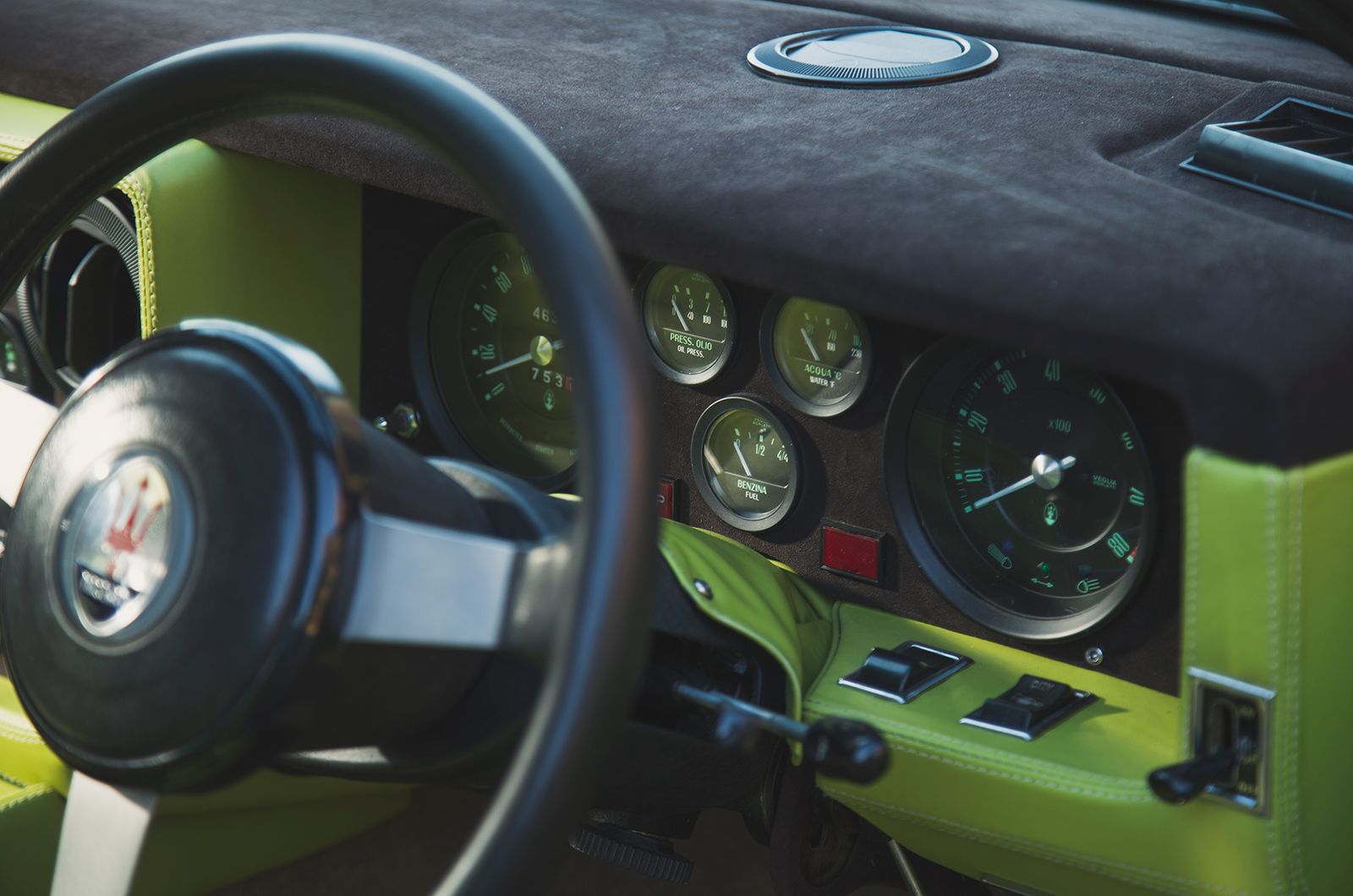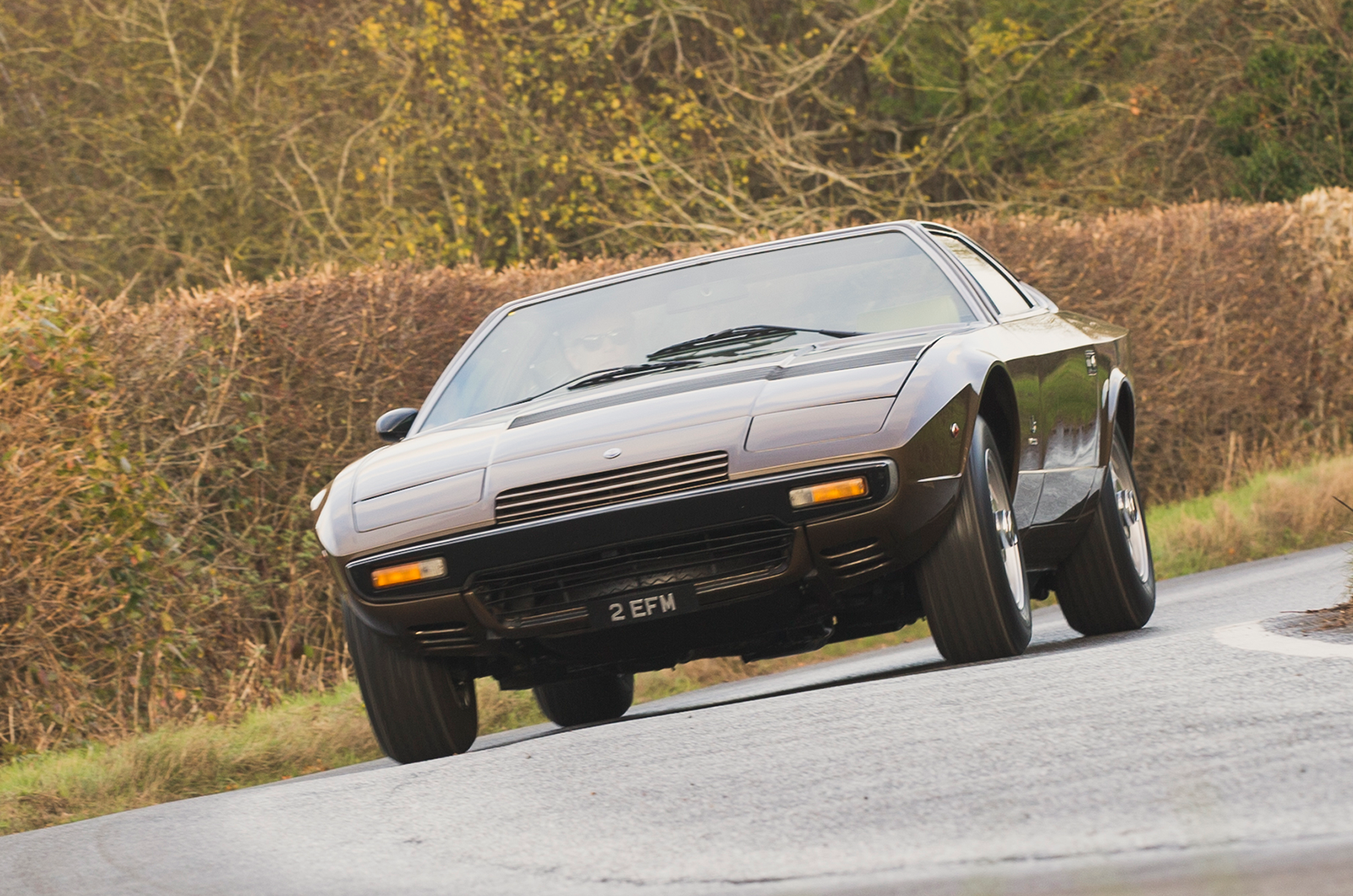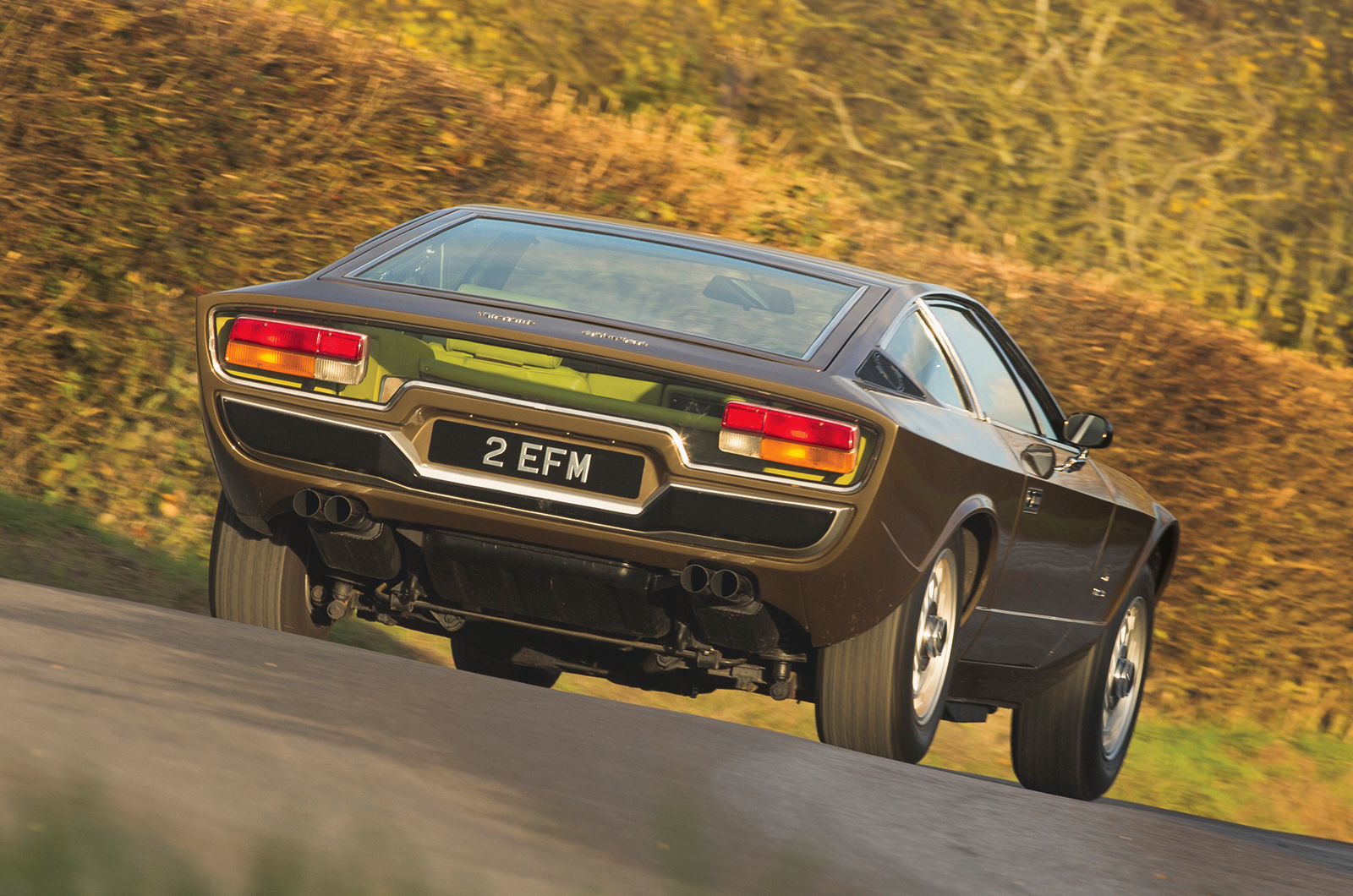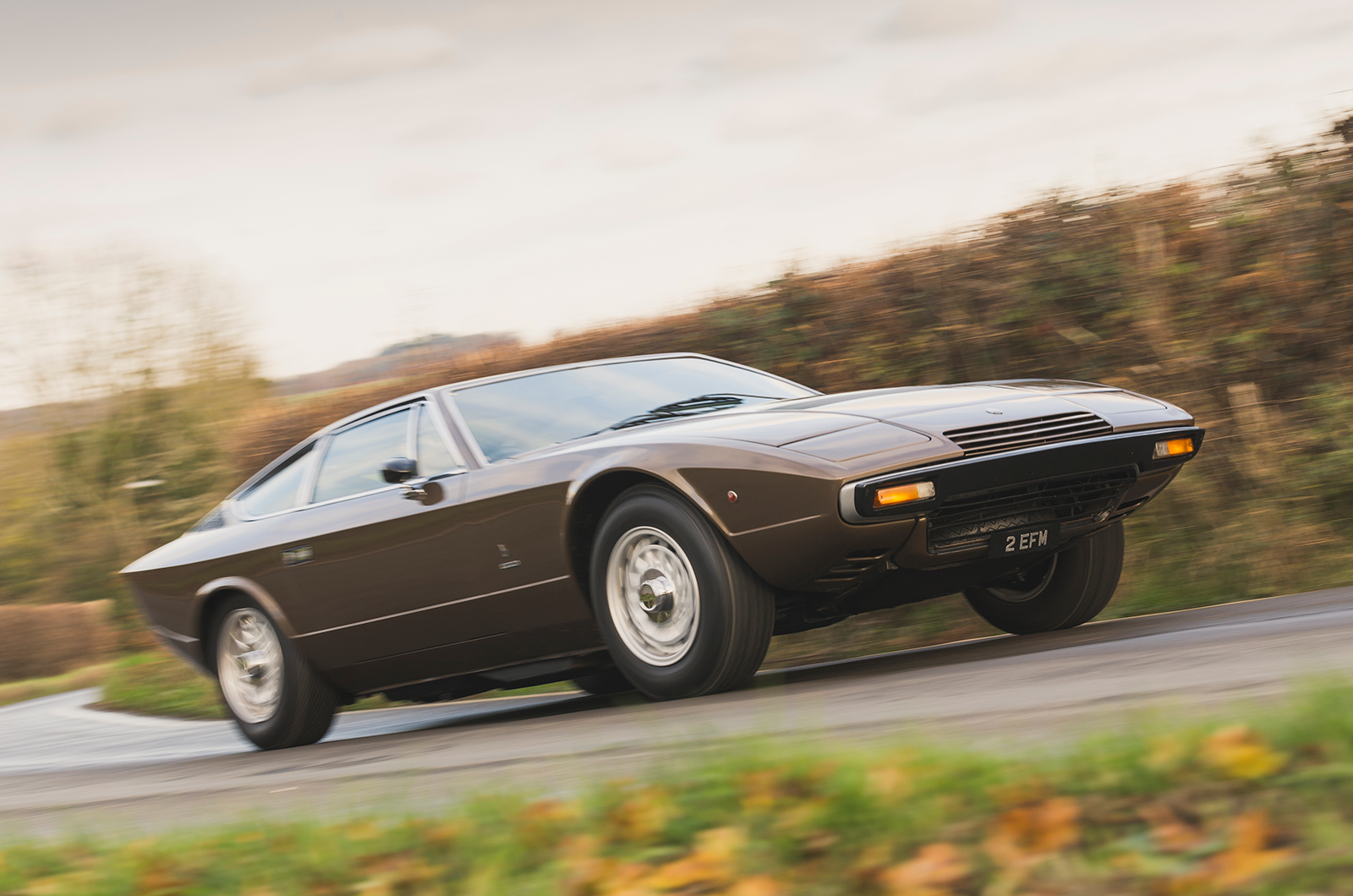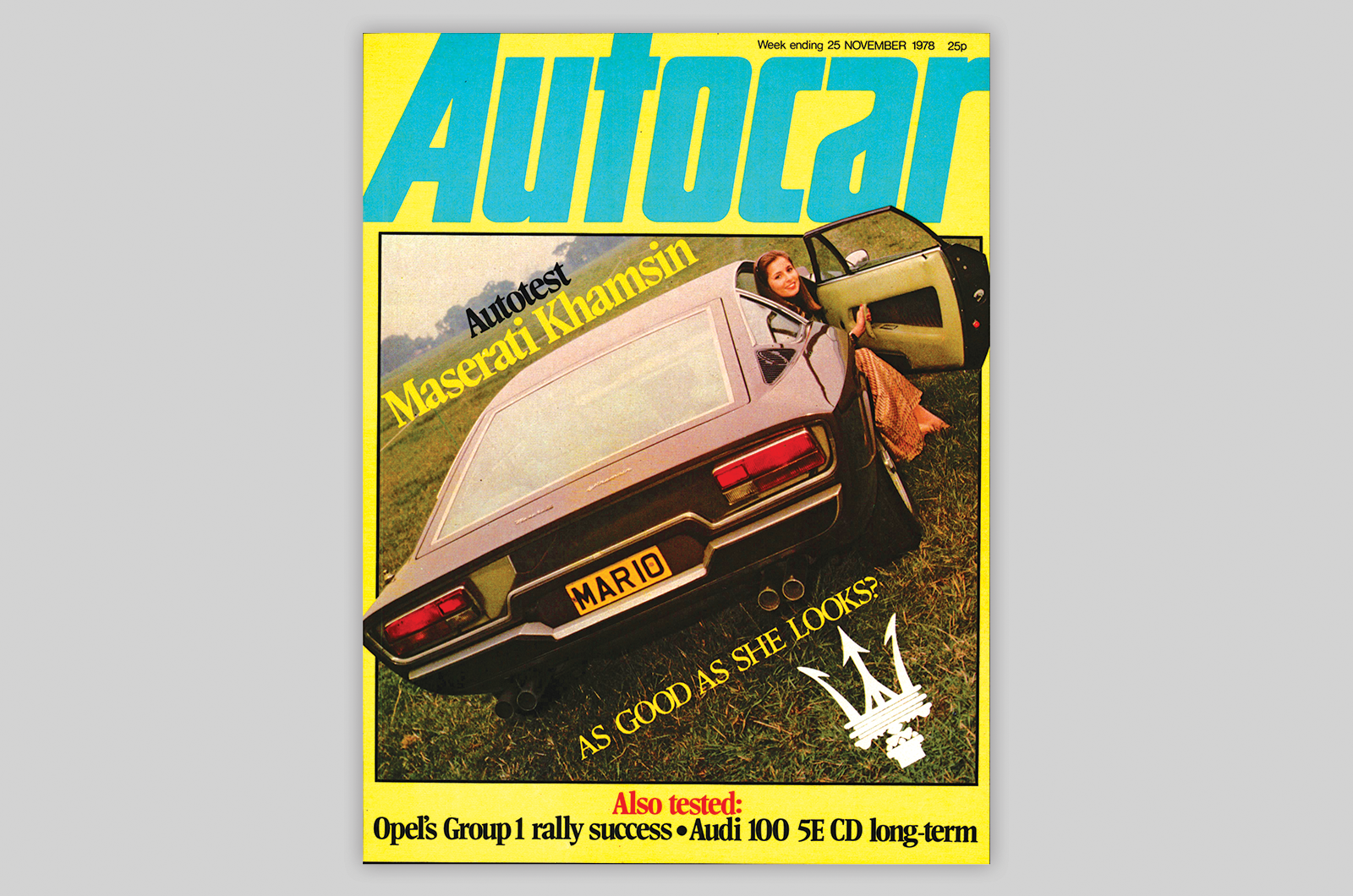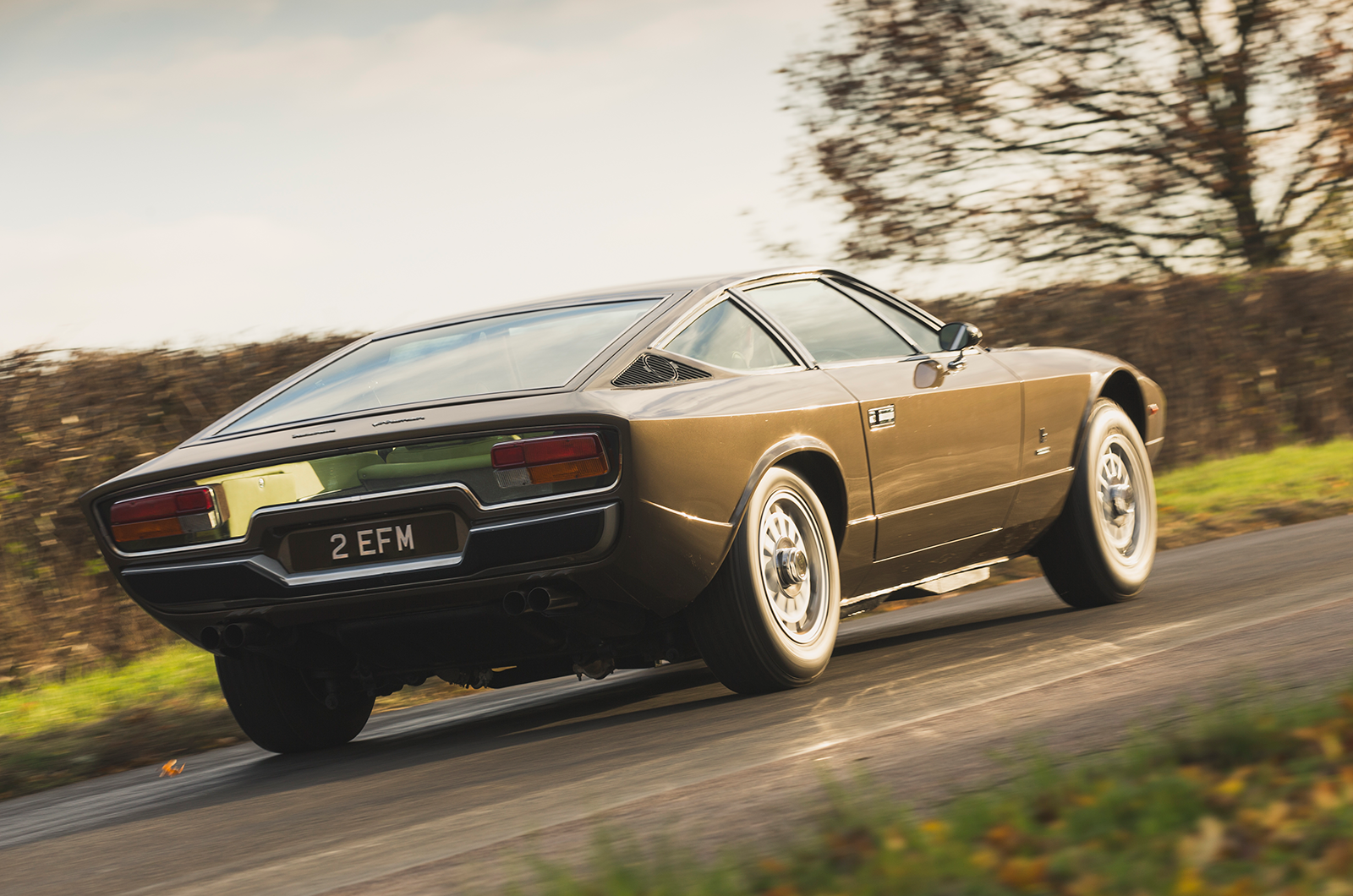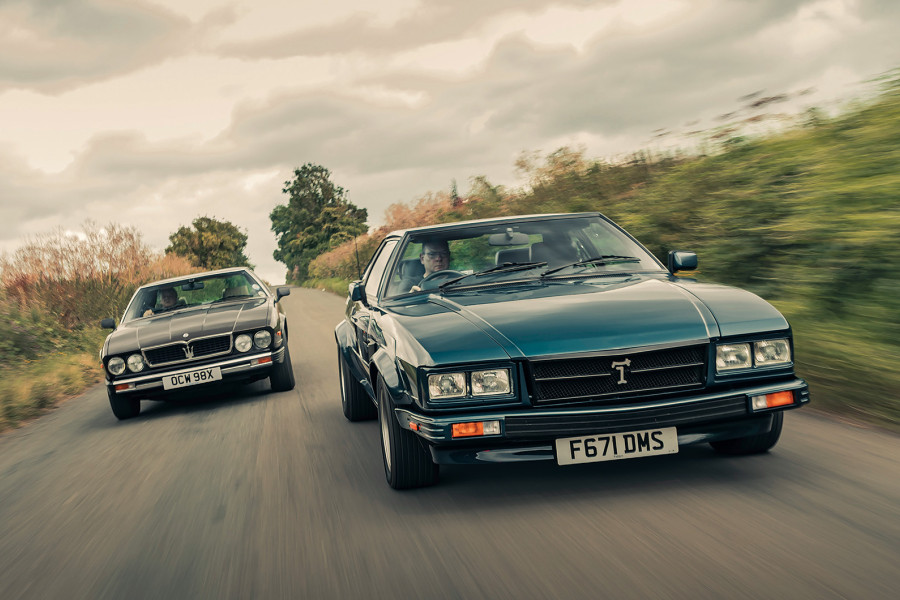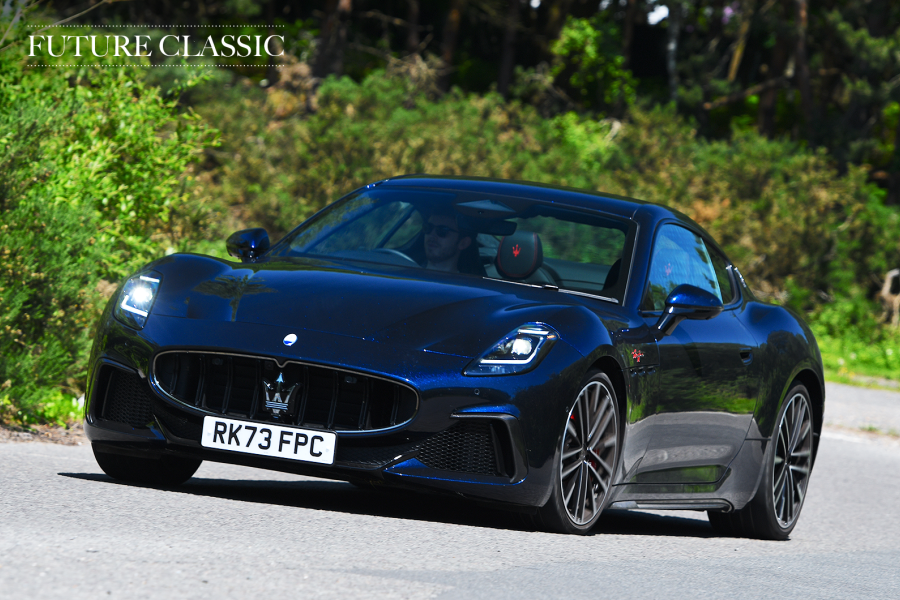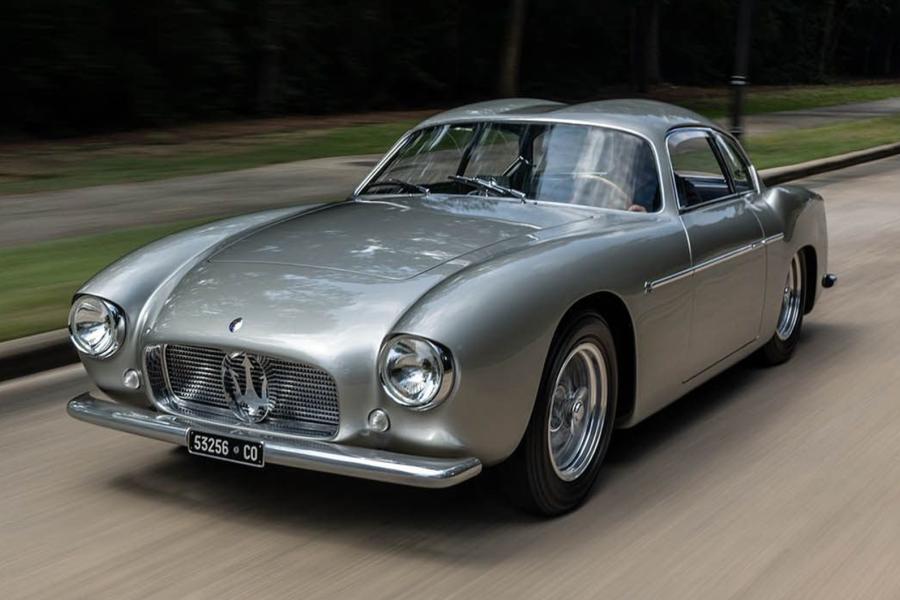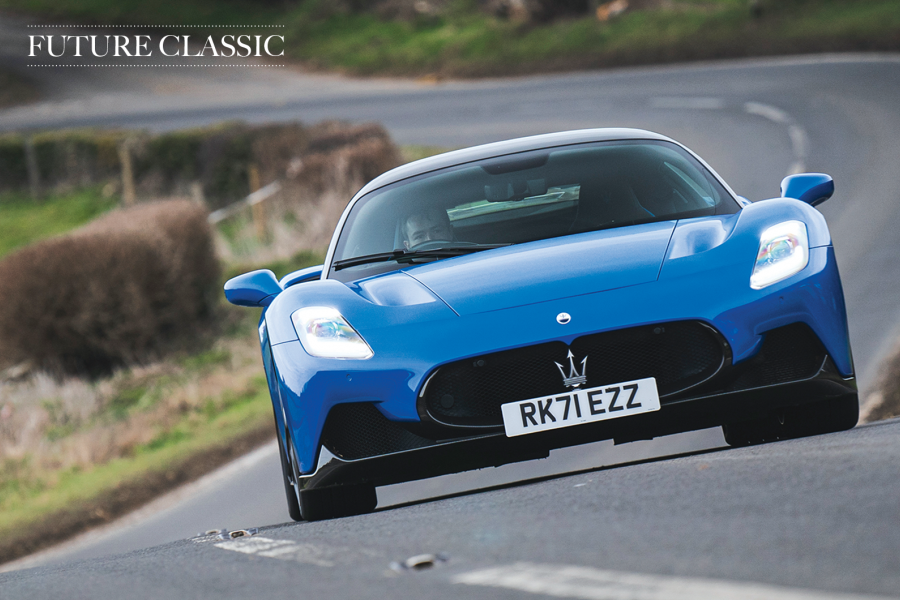The steering set-up dominates the Khamsin driving experience because, aside from being high-geared with only two turns from lock to lock, it also returns to the straight-ahead position once the wheel is released.
It feels a bit odd to begin with, but you soon acclimatise. In essence, you guide a Khamsin, the steering becoming appreciably – and dramatically – heavier at enthusiastic speeds.
Then there are the brakes. Only slight pedal pressure is required to scrub off speed. It’s a bit eerie to begin with, smooth modulation seemingly an alien concept, but, again, you acclimatise with familiarity.
It can take a little time to adjust to the Maserati’s idiosyncrasies, but it rewards with a hugely enjoyable driving experience
With a 50:50 front-to-rear weight balance, the Khamsin is one of the best-handling cars of its generation.
If you think that is over-praising, consider Autocar’s verdict in period: ‘Maserati has achieved notable empathy between the chassis and the engine… It can be thrown into slow-ish smooth corners like a big Elan.’
Without pushing particularly hard, the Khamsin feels composed; it doesn’t pitch, dive or wallow.
The Maserati’s engine note is evocative; the higher the revs, the better it sounds
Prior experience informs me that the car is ultra-stable at naughty speeds, but the pay-off is that the ride quality is on the harsh side.
There are jolts through the structure, overlaid with intermittent clonks and hisses as the hydraulic system maintains its operating pressure.
The engine note, however, is pure blue-blooded Italian at its very best.
The Khamsin still feels quick; it completes the dash to 60mph in 6.5 secs
This jewel of a V8 is the polar opposite of a pushrod Detroit unit, in that it is relatively muted at a cruise but bellows with a crisp and resonant sharpness when pressed. The higher the revs climb, the better it sounds.
Not that you really need to pile on the revs, given the available torque.
Below 100mph it’s just lollygagging, but it’s all too difficult to resist downshifting, and blipping while you’re at it, just to hear it snarl.
This Khamsin featured on the cover of Autocar in 1978
The five-speed ’box has a dogleg shift, and movement across the gate is well-defined, but there is a pronounced ‘ker-klunk’ as the lever is slotted into position.
It’s geared for 26mph per 1000rpm in top, the claimed maximum speed requiring you to stray well beyond the conservative 5500rpm redline to get there.
It feels quick, too, albeit with all the usual qualifiers and caveats regarding its age: 0-60mph in around 6.5 secs is still rapid.
‘If you categorically had to pinpoint the last great Maserati, this dart-shaped projectile must be a candidate’
The Franco-Italian gene-splicing here makes for a compelling overall package. However, the Khamsin remains misunderstood even half a century since it first broke cover.
There are some Maserati types who dislike it precisely because of the Citroën influences, but it is a hugely enjoyable drive once you overcome your initial reservations and get in sync.
It might not be widely touted as a landmark Maserati, but that’s only because it takes some people longer to cotton on than others.
Images: Luc Lacey
Thanks to: Andy Heywood
Enjoy more of the world’s best classic car content every month when you subscribe to C&SC – get our latest deals here
READ MORE
Cruise missiles: the Maserati Ghibli
Supercar legends: Ferrari 365GT4 Berlinetta Boxer fights Maserati Bora for Modena supremacy
The amazing hidden Maserati museum
Richard Heseltine
Richard Heseltine is a long-time contributor to Classic & Sports Car
